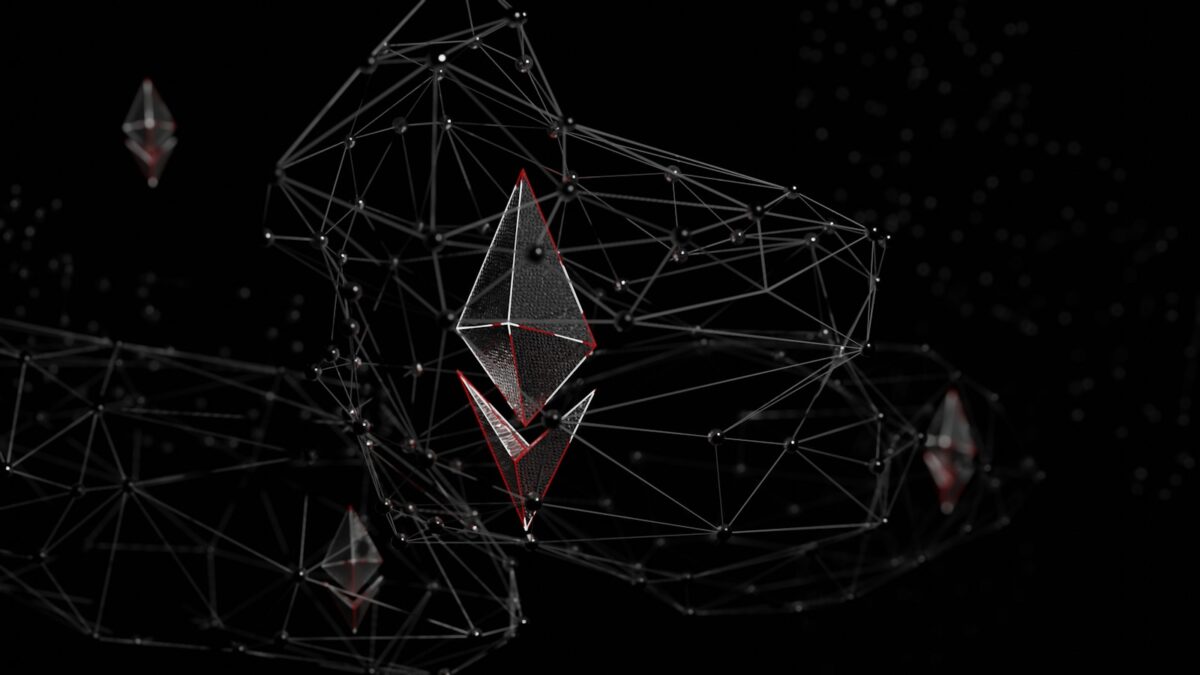
Peer-to-peer networks explained

Peer-to-peer (p2p) systems enable direct communication between nodes without relying on a central intermediary. Each node acts simultaneously as a client and a server, facilitating the transfer of data or resources across the network in a decentralized manner. This eliminates single points of failure and distributes workload evenly among participants.
The absence of intermediaries means that information flows directly from one node to another, increasing efficiency and resilience. Such architectures rely on protocols that coordinate discovery, connection management, and secure exchange. Investigating the mechanisms behind this direct exchange reveals how distributed consensus and trust can be achieved without centralized control.
Implementing p2p communication demands understanding how nodes identify each other, establish connections, and maintain synchronization despite dynamic conditions like varying availability or network delays. Experimentation with different topologies uncovers trade-offs between scalability, latency, and fault tolerance that influence real-world applications ranging from file sharing to blockchain technologies.
Understanding Decentralized Communication Through P2P Systems
Decentralized systems enable direct communication between nodes without relying on a centralized server, enhancing robustness and fault tolerance. In such an architecture, each node acts as both a client and a server, facilitating the transfer of data or resources directly to other participants in the network. This design eliminates single points of failure and distributes responsibilities evenly across all connected entities.
The distribution mechanism inherent in these setups allows efficient resource sharing and scalability. Nodes communicate by establishing direct links, which optimize latency and bandwidth usage compared to traditional hierarchical structures. This model is particularly advantageous for applications requiring high availability and resilience against censorship or downtime.
Technical Foundations of Node Interaction
Each node within this environment maintains a list of peers with which it can initiate connections for data exchange. The process involves discovery protocols that dynamically update peer lists to reflect network changes such as joining or leaving nodes. These protocols ensure consistent synchronization across the distributed ledger or database hosted collectively by the nodes.
A critical element is the transfer protocol used for message delivery, often built atop TCP/IP or UDP layers, supporting encrypted channels to preserve confidentiality and integrity during communication. For instance, blockchain implementations utilize gossip algorithms where information propagates through successive peer relays until full network consensus is reached.
- Direct transfer: Data packets move straight from one node to another without intermediaries.
- Distribution: Load balancing occurs naturally as many nodes share identical content copies.
- Fault tolerance: Failure of individual nodes has minimal impact due to redundancy.
The decentralized attribute minimizes reliance on centralized control points, reducing vulnerability to targeted attacks or outages. This also democratizes control over the system’s resources and decision-making processes among all participating entities.
Experimental case studies demonstrate that such distributed architectures improve transaction throughput and lower latency under specific configurations. For example, in blockchain networks like Ethereum or Bitcoin, each node verifies transactions independently while maintaining synchronization through consensus algorithms such as Proof-of-Work or Proof-of-Stake, ensuring data consistency across millions of nodes worldwide.
How P2P Nodes Communicate
The communication between nodes in a decentralized system occurs without relying on any intermediary, enabling direct interaction that enhances efficiency and resilience. Each node participates actively in the distribution of data by sending and receiving messages across the network, facilitating a continuous transfer of information essential for maintaining consensus and synchronization.
In such an infrastructure, every node acts as both a client and a server, allowing simultaneous upload and download operations. This dual functionality ensures that communication pathways remain open even if some nodes become inactive or disconnected, preserving the overall integrity of the system through redundancy and fault tolerance.
Mechanisms of Node Interaction
Nodes establish connections using protocols designed for peer discovery and message propagation. A common approach involves gossip protocols where each node randomly selects peers to exchange updates, ensuring rapid dissemination throughout the network. This method supports scalable transfer of blocks or transactions without centralized bottlenecks.
To optimize communication efficiency, nodes maintain routing tables that record reachable peers and their responsiveness metrics. These tables enable targeted message forwarding rather than broadcasting indiscriminately, reducing bandwidth consumption while sustaining swift distribution of critical data elements like transaction pools or state changes.
Security during communication is reinforced via cryptographic verification embedded within messages exchanged between nodes. Digital signatures confirm the authenticity of transferred data, mitigating risks associated with malicious actors attempting to inject invalid or fraudulent information into the distributed ledger.
A practical illustration can be found in blockchain systems such as Ethereum or Bitcoin, where nodes validate new blocks before propagating them further. The direct exchange between nodes eliminates intermediary delays typical in client-server architectures, thereby enhancing throughput and minimizing latency in global transaction processing.
Data Sharing in Decentralized Systems
Efficient data transfer within a decentralized architecture eliminates the need for an intermediary, enabling nodes to communicate directly. This direct communication reduces latency and potential bottlenecks commonly associated with centralized servers. Each participant functions as both a client and a server, facilitating symmetric exchange of information that enhances resilience and scalability. The distribution of data across multiple nodes ensures redundancy, which strengthens fault tolerance and maintains continuity even if individual nodes become unavailable.
The mechanism of data sharing relies heavily on the topology of the distributed system where each node independently manages its resources while adhering to common protocols. In such environments, data packets traverse through multiple peers rather than passing through a central hub, allowing for parallel processing and load balancing. For instance, content delivery platforms employing this approach demonstrate improved bandwidth utilization by leveraging numerous sources simultaneously instead of relying on a single origin point.
Technical Dynamics and Implications
Decentralized data transfer requires robust algorithms to handle discovery, routing, and synchronization among nodes. Protocols such as Distributed Hash Tables (DHT) facilitate efficient lookup services by mapping keys to responsible peers without centralized coordination. This method optimizes search operations by minimizing hops needed to locate desired content. Additionally, cryptographic verification ensures integrity during distribution, preventing tampering or unauthorized modification at any stage.
Exploring blockchain-based implementations reveals how immutable ledgers complement peer-level exchanges by recording transaction histories transparently among participants. Such integration supports trustless environments where data provenance is verifiable without reliance on third parties. Experimental setups combining file-sharing frameworks with consensus mechanisms illustrate practical pathways toward scalable decentralized infrastructures capable of handling diverse workloads while preserving privacy and security parameters.
Security challenges in P2P
Ensuring secure transfer of data within a decentralized system demands rigorous attention to the integrity and confidentiality of communication between nodes. The absence of a central intermediary enhances resilience but simultaneously exposes vulnerabilities related to trust and authentication among peers. Attack vectors such as Sybil attacks exploit the open participation model by flooding the network with malicious nodes, disrupting reliable distribution and consensus mechanisms.
Decentralized architectures rely heavily on each node’s capacity to validate incoming information without relying on centralized verification authorities. This creates challenges in preventing double-spending or replay attacks during asset or message transfer across the system. Cryptographic protocols like digital signatures and hash-based proofs play critical roles in mitigating these threats, yet their correct implementation must be rigorously audited to avoid exploitation.
Key security considerations
The dynamic nature of node participation leads to potential eclipse attacks, wherein an adversary isolates a targeted node by controlling its incoming and outgoing peer connections. This isolation impairs accurate state synchronization and can cause misinformation propagation through manipulated data streams. Network topology management strategies that diversify peer selection reduce this risk but require continuous refinement based on empirical traffic analyses.
Data confidentiality remains a vital concern due to unencrypted transmission paths between participants in certain distributed systems. Without adequate encryption layers, sensitive information exchanged during communication phases is exposed to interception or tampering. Implementing end-to-end encryption combined with forward secrecy protocols can substantially enhance privacy while maintaining efficient throughput across the network fabric.
Decentralized ledger environments face unique security hurdles regarding consensus finality under adversarial conditions. The distribution of authority among multiple nodes complicates swift agreement on transaction validity, making it susceptible to forks or temporary inconsistencies. Mechanisms such as Byzantine Fault Tolerance (BFT) algorithms incorporate redundancies designed to tolerate arbitrary faulty behaviors up to defined thresholds, strengthening system reliability despite malicious efforts.
Scalability pressures often introduce trade-offs between security guarantees and performance efficiency. Larger participant pools amplify exposure surfaces for potential breaches yet improve robustness through redundancy. Layered defense models incorporating adaptive rate limiting, anomaly detection via machine learning classifiers, and incentivized honest behavior emerge as promising solutions balancing these competing demands within peer-oriented ecosystems.
P2P Role in Cryptocurrencies
The architecture of decentralized cryptocurrencies relies fundamentally on a peer-to-peer communication model where each node within the system directly exchanges transaction data without requiring an intermediary. This direct transfer mechanism enhances security and resilience by eliminating single points of failure typically introduced by centralized servers. In practice, nodes operate both as clients and servers simultaneously, distributing ledger updates across the entire network to maintain synchronization.
Within this framework, the absence of an intermediary accelerates transactional throughput and lowers operational costs since no third-party validation is necessary for fund transfers. The distribution of transaction verification responsibilities among multiple nodes creates a robust consensus environment, preventing fraudulent activities such as double-spending. Each node independently validates incoming data according to predefined cryptographic protocols before propagating it further, ensuring integrity through collective agreement.
Technical Dynamics of P2P in Cryptocurrency Systems
The exchange of information occurs over a decentralized mesh where every participant acts as a relay point, forwarding blocks and transactions to connected peers. This multi-hop dissemination strategy optimizes network efficiency while accommodating scalability demands inherent to blockchain growth. For example, Bitcoin’s implementation utilizes a gossip protocol that ensures new blocks reach all nodes rapidly despite geographically dispersed participants.
From a communication perspective, this structure reduces latency by enabling direct interaction between peers instead of routing through central authorities. Moreover, it supports fault tolerance: if some nodes go offline or become compromised, the remaining active nodes continue uninterrupted data propagation. Consequently, transactions are confirmed faster and with greater reliability compared to conventional centralized payment systems.
An analytical investigation reveals that decentralization via P2P also mitigates censorship risks because no single entity controls the flow or inclusion of transactions into the distributed ledger. The equitable distribution of power across nodes results in democratized access and enhances transparency throughout the ecosystem. Experimental setups employing varying node densities indicate performance improvements correlate positively with increased peer participation, highlighting practical benefits achievable through optimized network topologies.
Conclusion: Establishing a Decentralized Node for Efficient Data Transfer
Setting up a node within a decentralized communication framework eliminates reliance on any single intermediary, enabling direct interaction and data exchange among connected participants. This architecture enhances the robustness of information distribution by allowing each participant to act as both client and server, thereby optimizing resource utilization and minimizing latency in transfer processes.
The configuration of such a node requires attention to protocol compatibility, network topology, and synchronization mechanisms to maintain data integrity across multiple endpoints. By deploying nodes that support fault-tolerant consensus algorithms and encrypted communication channels, it becomes possible to sustain trustless environments where validation occurs collectively rather than through centralized authorities.
Implications for Network Evolution and Future Research
- Decentralization Strength: Removing intermediaries reduces single points of failure and censorship risks, fostering resilient ecosystems adaptable to diverse application scenarios such as distributed ledgers or content delivery systems.
- Scalability Challenges: As node quantity grows, efficient routing protocols and bandwidth management become critical to preserve performance without compromising data consistency or security guarantees.
- Interoperability: Seamless integration between heterogeneous nodes encourages broader adoption by supporting varied hardware capabilities and software environments.
- Security Enhancements: Advanced cryptographic techniques combined with real-time monitoring improve resistance against Sybil attacks or malicious traffic injection attempts.
The ongoing development of node implementations should prioritize modular design principles, facilitating iterative upgrades aligned with emerging standards. Experimental deployments focusing on cross-protocol communication can reveal insights into optimizing transaction throughput while maintaining decentralization ethos. What adaptive strategies could further reduce dependence on traditional intermediaries without sacrificing efficiency? How might evolving consensus models influence the future architecture of these distributed systems?
Engaging with these questions through systematic experimentation will deepen understanding of decentralized frameworks’ potential. The role of individual nodes extends beyond mere data relay; they embody the fundamental shift towards autonomous interaction within complex digital infrastructures–a transformation warranting continued exploration and refinement.


